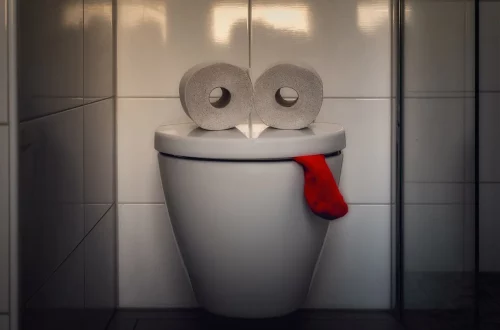
Understanding Dog Umbilical Hernia: Causes, Symptoms, and Treatment
Understanding the complexities of a dog’s health can be quite challenging, especially when it comes to identifying specific conditions that may affect our furry companions. Among these conditions is the umbilical hernia, a relatively common issue that can arise in dogs. An umbilical hernia occurs when there is a defect in the abdominal wall, allowing a portion of tissue or organ to protrude through the abdominal muscles near the umbilicus, or belly button. This condition can be alarming for pet owners, particularly when they notice unusual bulges or swelling in their dog’s abdomen.
The umbilical hernia can vary in size and severity, and while some cases may be minor and not cause any significant health concerns, others can lead to complications if not addressed properly. Understanding the underlying causes, recognizing the symptoms, and knowing the appropriate treatment options are essential for maintaining your dog’s health and well-being. By fostering awareness and knowledge about this condition, pet owners can make informed decisions and take timely action to ensure their pets receive the best possible care.
Causes of Umbilical Hernia in Dogs
Umbilical hernias in dogs can arise from various factors, with congenital issues being the most common cause. These hernias typically occur during the development of the fetus in the womb. If the abdominal wall does not close completely around the umbilical cord after birth, a weakness can form, leading to an umbilical hernia. This condition is often seen in specific dog breeds, particularly those that are predisposed to genetic defects.
In addition to congenital causes, trauma can also result in an umbilical hernia. Physical injuries, such as those sustained during rough play or accidents, may lead to a rupture in the abdominal wall. In older dogs, age-related muscle weakness can contribute to a hernia’s development, especially if the dog has been overweight for an extended period. Obesity places added stress on the abdominal muscles, making them more susceptible to herniation.
Hormonal factors can also play a role in the development of umbilical hernias. For instance, hormonal imbalances might affect the strength and elasticity of the abdominal tissues, leading to an increased risk of hernias. Moreover, certain medical conditions, such as liver disease or ascites (fluid buildup in the abdominal cavity), can further exacerbate the risk by placing additional pressure on the abdominal wall.
Understanding these causes can help pet owners take preventive measures. Ensuring that dogs maintain a healthy weight, receive regular veterinary check-ups, and are monitored for any signs of trauma or injury can go a long way in minimizing the risk of umbilical hernias.
Recognizing the Symptoms of Umbilical Hernia
Recognizing the symptoms of an umbilical hernia is crucial for early intervention and treatment. The primary sign of an umbilical hernia is the presence of a noticeable bulge or swelling in the area around the belly button. This bulge may become more pronounced when the dog is standing or straining, such as during bowel movements.
In some cases, the hernia may be small and cause little to no discomfort; however, pet owners should remain vigilant for any changes in their dog’s behavior or health. Symptoms can vary depending on the severity of the hernia. If the hernia becomes incarcerated or strangulated, it can lead to more serious issues. An incarcerated hernia occurs when the tissue protruding through the abdominal wall becomes trapped, while a strangulated hernia involves compromised blood flow to the trapped tissue, leading to tissue death.
Signs of a strangulated hernia may include severe pain, vomiting, lethargy, and a noticeable change in appetite. Dogs may also exhibit signs of distress, such as whimpering or excessive panting. If pet owners observe any of these symptoms, it is essential to seek veterinary attention immediately, as these situations can be life-threatening.
Additionally, some dogs may experience gastrointestinal symptoms, such as constipation or diarrhea, as a result of the hernia affecting their digestive system. Regular monitoring of your dog’s behavior and health can help catch any potential issues early, allowing for prompt veterinary care.
Treatment Options for Umbilical Hernia
When it comes to treating an umbilical hernia, the approach may vary based on the size of the hernia and the overall health of the dog. In many cases, if the hernia is small and not causing any discomfort or complications, your veterinarian may recommend a “wait and see” approach. Regular monitoring of the hernia can ensure that it remains stable and does not lead to further issues.
However, surgical intervention is often the preferred treatment for umbilical hernias, especially if they are larger or if there are concerns about strangulation. During surgery, the veterinarian will carefully push the protruding tissue back into the abdominal cavity and repair the defect in the abdominal wall. This procedure is typically performed under general anesthesia and is considered safe for most dogs.
Post-operative care is essential for a successful recovery. Pet owners should follow their veterinarian’s instructions regarding pain management, activity restrictions, and wound care. It is crucial to prevent the dog from licking or biting at the surgical site, as this can lead to infection or complications.
In some cases, if the hernia is detected early and is small, the veterinarian might recommend monitoring rather than immediate surgery. In such situations, regular check-ups can help ensure that the hernia does not worsen.
Overall, ensuring your dog receives timely veterinary care and treatment can significantly improve their prognosis and quality of life. Early intervention and appropriate management can help prevent complications and support your dog’s health moving forward.
This article is for informational purposes only and should not be considered medical advice. For any health concerns regarding your pet, please consult a qualified veterinarian.




